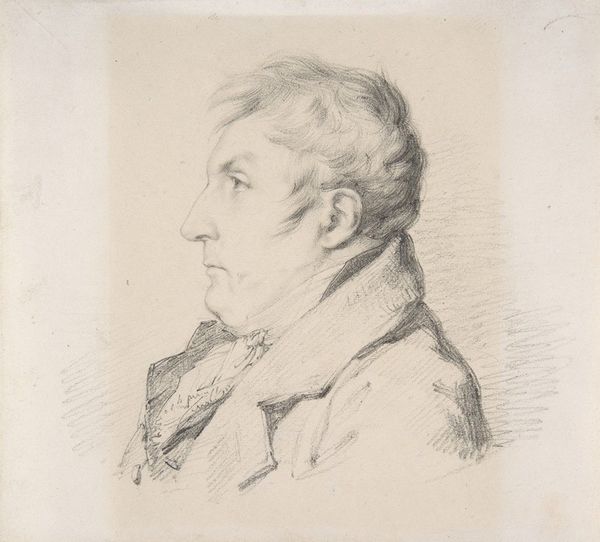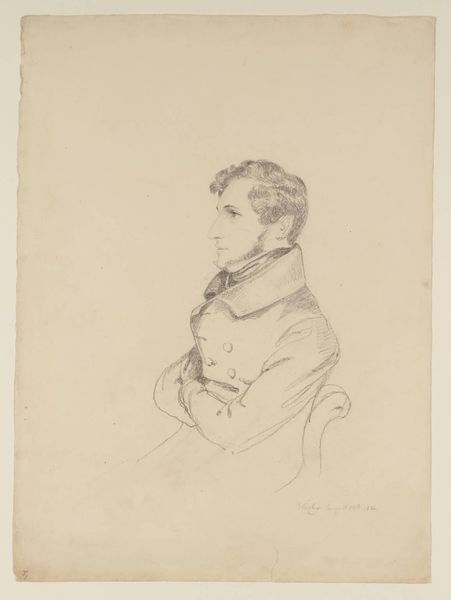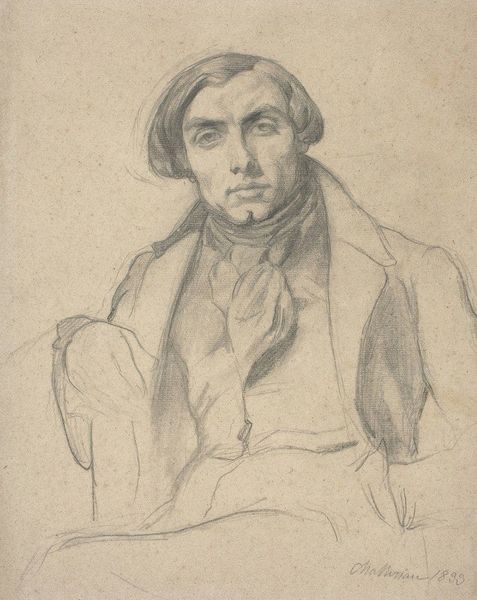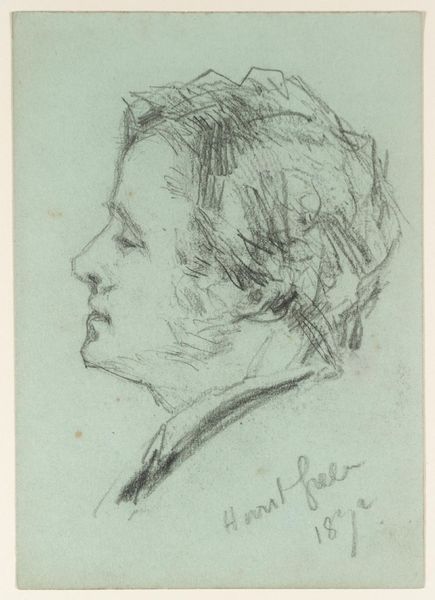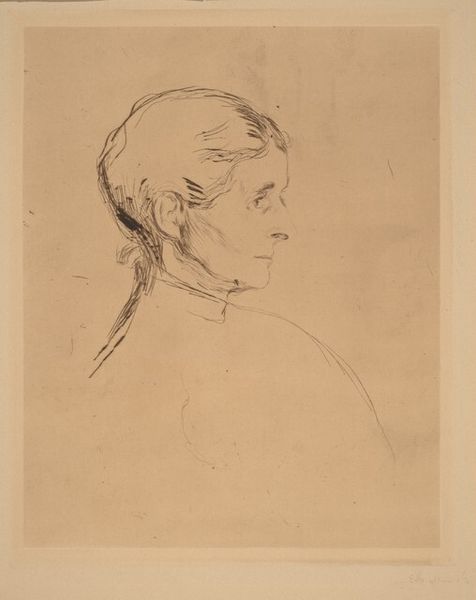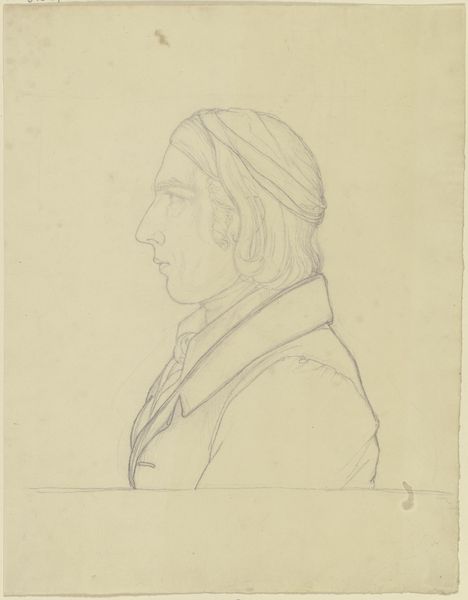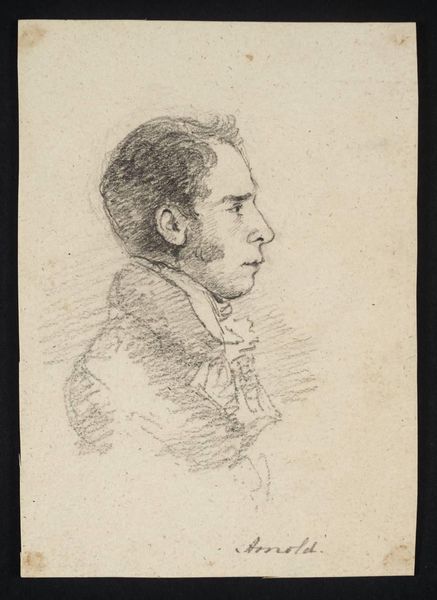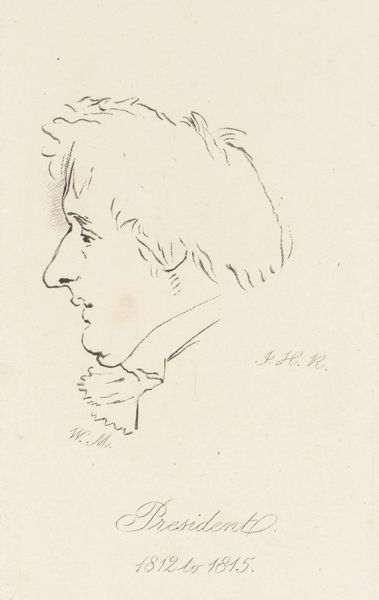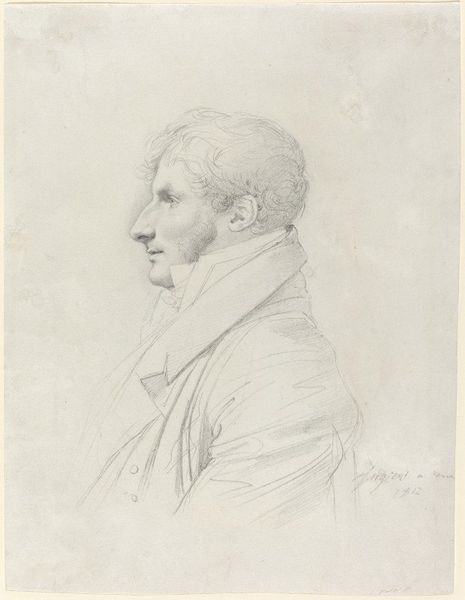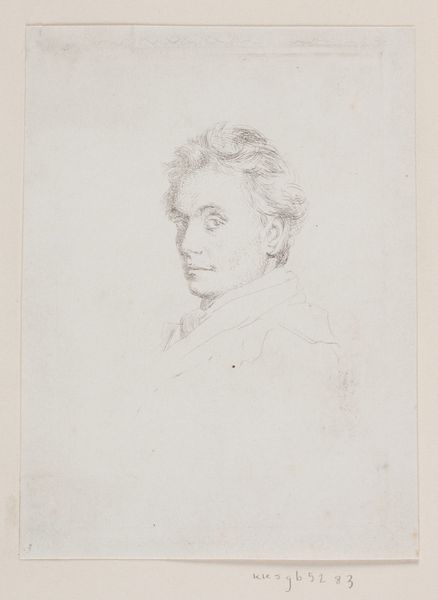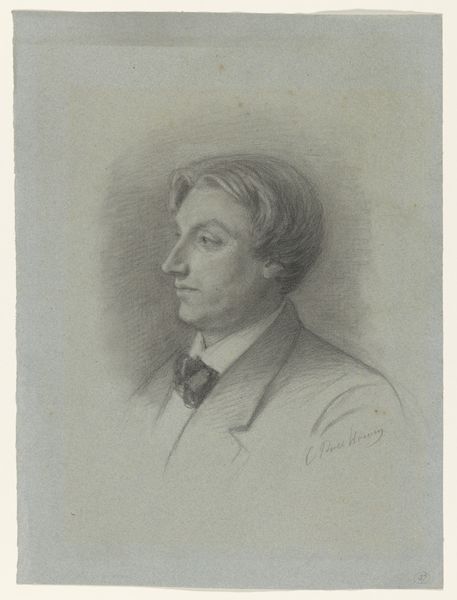
drawing, pencil
#
portrait
#
pencil drawn
#
drawing
#
pencil sketch
#
pencil drawing
#
pencil
#
portrait drawing
#
realism
Dimensions: height 343 mm, width 251 mm
Copyright: Rijks Museum: Open Domain
Editor: So, here we have Jozef Israëls's "Profile Portrait of Mr. Carel Vosmaer," likely from around the late 19th century. It’s a pencil drawing, and there’s something quite pensive about the sitter's expression. How do you interpret this work? Curator: Beyond a simple likeness, I see a representation of 19th-century Dutch intellectual life. Vosmaer, as a writer and art critic, occupied a specific cultural position, participating in a moment grappling with ideas of national identity and artistic purpose. This portrait, rendered with such delicate realism, situates him within that narrative. It reflects the values that society then put on people such as Vosmaer. Does it prompt questions about representation, about who gets remembered, and how? Editor: That's a compelling point. I was focused on the aesthetic, the detail in the hair, but you're right, it's more than just the artistic execution. How might his role as an art critic impact how Israëls approached this portrait? Curator: Perhaps there was an awareness of being judged, a self-consciousness on both sides. Did Israëls aim to impress, or to capture a truth that transcended the critic's own opinions? Also, this was a time of shifting class structures in Dutch society; what position does Vosmaer take? What message is portrayed through the portraitist's depiction of the subject? Editor: That makes me wonder if the seemingly simple composition is actually carefully constructed to convey a specific message about Vosmaer's intellect and status. Curator: Exactly! Consider also how artistic movements like Realism shaped the representation of individuals. Were artists democratizing portraiture, moving away from idealizing the elite, or simply adopting a new aesthetic style to serve the same social functions? Editor: It really highlights how a single image can be a lens through which to view broader social and intellectual currents. I had not considered that layer before. Thank you. Curator: It is essential to read these visual narratives not just as isolated artworks, but as threads interwoven with larger historical and social textiles. And, of course, it is always interesting to analyze where power lays and who represents who.
Comments
No comments
Be the first to comment and join the conversation on the ultimate creative platform.

